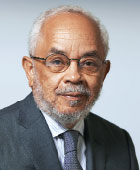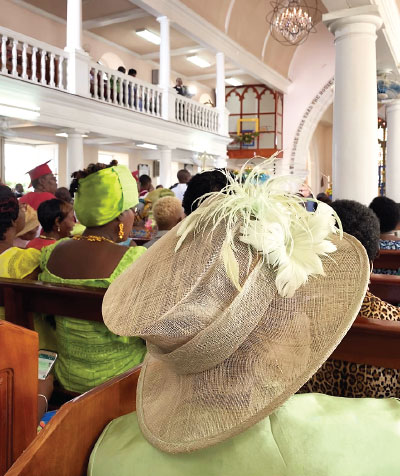Building Community: We Gatherin’ Barbados
Abstract

It was a beautiful February morning. I had never witnessed a church ceremony like this one, whose objective was the solemnization of citizens’ coming together and celebrating their national cohesion. The Barbados government called it a “gatherin’, ” dropping the last letter of the word to signify that the term was formulated in the people’s street patois.
The government had begun this unique yearlong initiative a month earlier in St. Lucy, the most northern parish of this Caribbean country. A St. Lucy contingent was now passing the baton to the people in the neighboring parish of St. Peter. The country’s governor general was in attendance, as were the acting prime minister, several parliamentary representatives, and individuals from all walks of Barbadian life. Tropical flora decorated the Anglican church, and the music was decidedly ecumenical. People were wearing outfits reflecting the melding of their British, African, and West Indian cultural heritage, as illustrated by the women’s headwear in the photo on the facing page. There has been, of course, dynamic cultural change in their customs and rituals since Barbados obtained independence from its centuries-old British colonizers in 1966.
The government invited all Bajans, the diminutive name for Barbadians, to celebrate themselves throughout 2020. All 11 parishes of Barbados will in turn welcome residents from other parishes. Bajans throughout the diaspora have also been invited home to celebrate the island, its culture, and its people’s achievements. The objective, given the symbolism of the year 2020, is to gather and simultaneously look back and forward.
The organizers of the gatherin’ have been advertising a range of activities. For example, sports will be represented by dominoes and road tennis. Public lectures will focus on different aspects of the island’s socioeconomic and infrastructural development. There will also be tours of the island’s patrimony and discussions of the country’s artists, economists, and health caregivers. Steel pan music and calypso singing will be juxtaposed against the island’s heritage and traditions of classical and church music. Even genealogists will be available to help in finding of one’s roots.

There was little doubt the gatherin’ was meant to be inclusive. That’s why the activity venues extended into all the parishes, and the themes of the individual meetings covered the old, the young, males and females, and broad interests of the population. One could tell that there was a sense of healing in the air. Everybody was promoting interpersonal connecting, pride in self and country, awareness of what it means to be a Barbadian, and confidence in self and neighbors. The politicians had devised an ingenious way of inviting everybody to renew membership in the small country and contemplate ways of sharpening the connection to home. Added to that invitation was the prod to take some responsibility for the future of the island and its efforts to confront the growing drug problem, violence, and unemployment.
In the weeks following the Sunday service, I chatted with local and returning folk. I visited the countryside and sampled food in restaurants. I attended steel pan concerts and toured art museums. I even revisited museums and listened to the crashing of the waves at different beaches. I remembered Devika Chawla’s advice (see Stories of Home: Place, Identity, Exile by D. Chawla and S. H. Jones) to monitor and untangle home’s habits and its affective rhythms. There was also Chawla’s mention of the personal restorative power of home’s rituals and performances. I could see home in music, art, sports, religious ritual, and the smells and sights of Bajan life all around me.
There must be something good about celebrating one’s self, one’s roots, and the contributions of family to a firm developmental foundation. I liked the notion that home-space could symbolize achievement and promise. This was a Barbadian form (a we-gatherin’) of civic engagement and community building, with significant implications for individual and collective well-being. ■



